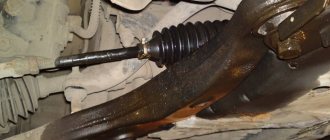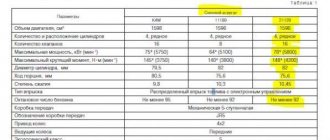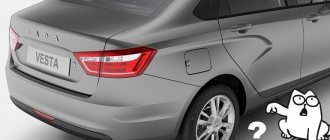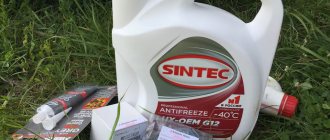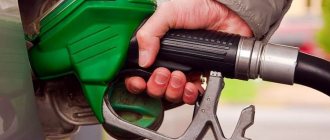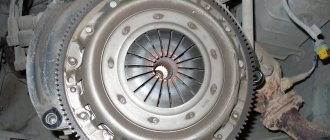Car : Lada Kalina. Asks : Ivanov Sergey. The essence of the question : What kind of gasoline is better to fill in the Lada Kalina?
Good afternoon, please tell me what is the best way to fill the Lada Kalina with gasoline? I doubt my choice because there are disagreements between official sources and reviews from Kalina owners. They say that with 92 gasoline the fuel consumption of the Lada Kalina is higher, and the engine does not drive as dynamically.
Fuel and lubricants for Lada Kalina 2. brands recommended by the factory
A car manufacturing plant always recommends the use of fuels and lubricants of certain brands. As for gasoline, Kalina-2 owners are advised to refuel their cars with the following brand of fuel: “Premium Euro-95” (GOST R-51866).
In fact, any gasoline with an octane rating of 95 will do, but the instructions state that the fuel must not contain metal additives (lead, iron, manganese). Such additives are the basis of anti-knock mixtures.
All motor oils recommended for use
Engine oil is usually replaced along with a paper filter. This consumes 2900 ml of fluid (for versions with automatic transmission – 4100 ml). The intervals between replacements are indicated in the service book.
Recommended materials for use:
BrandViscosity SAEQuality
| Lukoil LUX | 15W40 | SL/CF (B5/D3) |
| Lukoil LUX semi-synthetics | 5W30, 5W40, 10W40 | SL/CF (B5/D3) |
| Lukoil LUX synthetic | 5W30, 5W40 | SN/CF (B6/D3) |
| Rosneft MAXIMUM ( Angarsk, Novokuibyshevsk) | 5W40, 10W40 | SL/CF (B5/D3) |
| Rosneft PREMIUM ( Angarsk) | 5W40 | SM/CF (B6/D3) |
| TNK MAGNUM SUPER | 5W30, 5W40, 10W40, 15W40, 15W50 | SL/SJ/CF (B5/D3) |
| Gazpromneft PREMIUM | 10W40 | SL/CF (B5/D3) |
| G-ENERGY S SYNTH, F SYNTH | 5W40, 10W40 | SL/CF (B5/D3) |
| G-ENERGY EXPERT L | 5W30, 5W40, 10W40 | SL/CF (B5/D3) |
| GT TURBO SM (Hanval INC) | 10W40 | SM (B5) |
| ESSO ULTRA | 10W40 | SL/SJ/CF (B5/D3) |
| MOBIL 1 ESP FORMULA | 5W30 | SN/SM/CF (B6/D3) |
| MOBIL 1 NEW LIFE, PEAK LIFE, SUPER 3000 X1 | 0W40, 5W40, 10W40, 5W50 | SN/SM/SL/SJ/CF (B6/D3) |
| MOBIL SUPER 2000 X1 | 0W40, 5W40, 10W40, 5W50 | SL/SJ/CF (B5/D3) |
| SHELL HELIX PLUS | 5W40, 10W40 | SL/CF (B5/D3) |
| SHELL HELIX ULTRA, HX7, HX8, PLUS EXTRA | 5W40, 10W40 | SM/CF (B6/D3) |
| ZIC A PLUS | 5W30, 10W30, 10W40 | SL (B5) |
To narrow the range of choices, be guided by the climatic conditions in which the car will be used. It is recommended to determine the viscosity class based on air temperature:
Lower limitViscosity gradeUpper limit
| –35 and below | 0W40 | +30 |
| –30 | 5W30 | +25 |
| –30 | 5W40 | +35 |
| –25 | 10W30 | +25 |
| –25 | 10W40 | +35 |
| –20 | 15W40 | +45 |
| –20 | 20W50 | 45 and above |
It is recommended to change the oil at a service station (service station). , however, the owner himself can add liquid to the tank.
Adding oil to the expansion tank
The oil level is controlled as follows: when the engine is turned off, unscrew the diagnostic dipstick located near the cylinder head cover between the third and second cylinders. A secondary check is carried out no earlier than after 3–5 minutes. after topping up.
The factory usually fills it with semi-synthetic material with a viscosity of 5W30 produced by Rosneft OJSC. Check the information by opening the service book.
Manual transmission oil
Transmission oils, just like motor oils, are classified according to quality level. According to API designations, all performance properties are characterized by one number (from 1 to 6). The following consumables are suitable for the manual transmission of Kalina-2 cars:
Brand Viscosity SAE API Class
| Lukoil TM-4 transmission | 75W80, 75W85, 75W90, 80W85, 80W90 | GL-4 |
| Rosneft KINETIC (Angarsk, Novokuibyshevsk) | 80W85 | GL-4 |
| Rosneft KINETIC ( Novokuibyshevsk) | 75W90 | GL-4/5 |
| Tatneft TRANSLUX TM4-12 | 75W85 | GL-4 |
| TNK TRANS KP | 80W85 | GL-4 |
| TNK TRANS KP SUPER | 75W90 | GL-4 |
| G-BOX EXPERT GL-4 | 75W90, 80W85 | GL-4 |
| Gazpromneft GL-4 | 80W85, 80W90 | GL-4 |
| SHELL SPIRAX S5 ATE | 75W90 | GL-4/5 |
In an automatic transmission, the oil cannot be changed. When changing manual transmission oil, it is preferable to use material with a viscosity of 75W85, 75W90.
How to add transmission oil
The main thing is that the dipstick plug should always be screwed in as far as possible. The volume of transmission fluid in a manual transmission is 2200 ml, but, according to reviews, it is about 3 liters. The material used is from the factory manufactured (see table above).
Gasoline consumption of Lada Largus according to the passport
The passport values for gasoline consumption of the Lada Largus are determined after assembly, in factory testing laboratories. At the same time, such measurements are for informational purposes only, since the laboratory does not take into account additional influencing factors.
The table shows the fuel consumption figures for the Lada Largus, which are indicated by AvtoVAZ according to the passport. Basically, the difference in numbers is due to different engine sizes and horsepower. Fuel consumption for Lada Largus:
| Engine volume, l | Power, hp | Transmission type | Average consumption per 100 km, l | Fuel consumed |
| LADA Largus 1st generation (2012) | ||||
| 1,6 | 84 | Manual transmission | 8,1-8,6 | Unleaded gasoline AI-92 |
| 87 | Manual transmission | 8,2-8,7 | ||
| 102 | Manual transmission | 7,8-8,3 | ||
| 105 | Manual transmission | 7,8-8,4 | ||
| 106 | Manual transmission | 7,9-8,5 | ||
| LADA Largus (modification R90) | ||||
| 1.6 | 84 | Mechanical transmission | 8,1-8,8 | Unleaded fuel AI-92 |
| 87 | 8,2-8,9 | |||
| 102 | 7,8-8,6 | |||
| 105 | 7,7-8,8 | |||
| 106 | 7,9-8,9 | Gas fuel | ||
| LADA Lardus (2022 modification) | ||||
| 1,6 | 87 | Manual transmission | 8,1-8,9 | Gasoline AI-92 |
Please note that the 82 hp versions and 85 hp
can not be. In fact, the passport values of gasoline consumption for the Lada Largus are provided for informational purposes only. If we compare them with real indicators, we will see that the numbers are different.
This happens because real factors such as driving style, type of road surface and fuel quality. This leads to the fact that the amount of fuel per 100 kilometers increases significantly compared to the technical passport.
What then to do with “older” gasoline?
If you consider the above information, you might think that it would then be advisable to fill your car with gasoline with a higher octane number. For example, this could be the A-98, which is the standard for many modern foreign-made cars.
But here again we will have to disappoint you, since the mechanism requires a clear and correct attitude towards itself. Therefore, if the compression ratio is designed for A-95, then A-98 gasoline will be compressed to exactly the same level. And the potential of this fuel can only be revealed when its compression force is higher, which the Lada Grant engine is not designed for.
The result of refueling with 98-grade gasoline will be the inability to use its properties to the maximum, and you will simply lose your money due to the difference in the cost of gasoline of different brands.
see also
Comments 29
If the factory says 95 gasoline, it means it’s for a reason. I only use 95.
Read more: Ground fuse for pioneer linear outputs
I use the 92nd, I drive in the city, the consumption is 9 l 100 km. What difference does it make what kind of gasoline is burned in a traffic jam?
I use 95 and the car behaves better on it. I noticed this a long time ago, but I can mix 92 with 95 in the tank
At 92, the car drives stupidly and the consumption is higher, even if 95 is a little more expensive per liter, but the consumption is less and the car drives better.
If you pour 92, the catalyst will cover faster.
How much faster? The base is the same, the sulfur is also the same)))
The compression ratio is not suitable for 92 gasoline - hence the lack of combustion of the mixture.
Detonation and lack of combustion are incompatible... SZh 9.6, why is it unsuitable for the 92nd... And why was it suitable from 1984 to 2004, even on carbs without dd?)))) Euro-3... The cat, by the way, is not fundamentally different for Euro-2... In fact : it runs at 92 quite well and for a very long time... It’s better not to skimp on oil if you feel sorry for the cat...
Well, at least we all know where the roots of the Kalina engine come from, but still it has slightly different characteristics and the electronics there are designed to work with 95 gasoline. And Euro2 differs from Euro3 only in the presence of a second lambda and firmware, but the second lambda allows you to more accurately select the mixture, reduce consumption and enter a higher class of environmental friendliness
Judging by the rebound of the UOS, it’s not very clear that it’s written for 95))) Yes, and the 2111 is also configured for 95 esu))) I agree with everything, except that Euro-3 “eats” more precisely because poverty, IMHO...
Lew 95 - I feel great. After capitalizing the cylinder head and rolling back about 6000 km - compression 13.5-14
I even filled in the 100th) Norm!
Liu 95 to 92 shakes violently at idle, there seems to be a lot of detonation
On xx detonation?)))
I don't know. It just shakes the car at 92
According to the practice of 8 bug engines on a nine and a viburnum, it was pouring both. There is a difference, but not significant. The factory prescribed pouring 95 into the viburnum. I spat and poured for half a year 92, until the knock sensor began to go crazy and the engine rattled. Replaced sensor and switched to the 95th, after which the problems went away. And on the 92nd, the dynamics and consumption were much worse than on the 95th, but it started with half a push even at -42.
What kind of stupid questions are these? The manufacturer decided everything a long time ago. You need to pour 95 gasoline into the engine according to the service book.
Have read this book, but definitely need some advice...
HBO, the fourth generation is it)
Lew 92. Consumption in summer 7.0-7.1 in winter 7.5-7.8 tried 95, ZERO difference.
| Actions: |
Results
As you can see for yourself, there is no big difference between AI-95 and AI-92 . Therefore, a reasonable question arises: why pay more, but get the same amount from it? However, you should always remember that before you give preference to one thing, you should try everything.
Remember the most important thing is that you should refuel your car only at trusted gas stations from trusted suppliers.
Hello everyone. Please share your impressions about fuel, which is better to fill in a viburnum with a 1.6 engine 8 kl-92 or 95?!
Oil properties
Especially for the Lada Kalina, AvtoVAZ has prepared a whole technological scheme that you need to follow when choosing the right oil. First, let’s look at why engine oil is so useful in general:
- Oil lubricates the internal parts of the engine, and thus cleans it of dirt deposits.
- The oil is designed for more efficient cooling of parts heated to a critical temperature
- The oil protects the internal combustion engine from various corrosive effects on the internal components of the internal combustion engine.
New Lada: Instructions for changing engine oil Lada Largus (K7M and K4M) » Lada.Online - all the most interesting and useful about LADA cars
Markings
Let's look at oil manufacturers, as well as markings that can help you find out whether Lada Kalina supports a particular oil.
- Lukoil Lux. SAE class – QW-40, 10W-40, 5W30; group – SL/CF
- Luxe Hit/Best. SAE class – 10W-40; group – SL/CF
- Novile Super. SAE class – 5W-30, 20W-50, 15W-30; SJ/CF
- Rosneft Maximum/Premium. SAE class – 5W-40, 10W-40, 5W-40; SL/CF
- Tatneft Synthetic/Ultra. OW-40, 5W-30, 5W-40; SM/CF, SL/CF
- Esso Ultra. 10W-40, SJ/SL/CF
- Mobil 1.OW-40, 5W-50, 10W-40; SJ/SM/SL/CF
- Shell. 5W-40, 10W-40; SL/CF
- ZIC A. 5W-30, 10W-30; SL
As you can see, Lada Kalina owners have a wide selection of oils with different classes and standards. Based on these standards, a car enthusiast can safely fill in any oil from the specified list.
Will the valves or pistons burn out?
These horror stories came to us from old carburetor cars. Where there were often only two types of gasoline, 76 and 93. And pouring 93 into an engine with 76 was not recommended! Why? YES because the carburetor could not automatically adjust the “octane number”, and it turned out that the mixture was still burning in the cylinders, but the exhaust valves opened and were melted by this flame!
YES this really happened, but if you adjust the carburetor to use high-octane fuel, then nothing bad will happen either.
Modern cars often already allow the use of all types of fuel; in the instructions for use, you can see the following inscriptions:
- From 91 to 99
- At least 92
- Not less than 95
- 95 is recommended, but 98 is possible
And so on. What this tells us is that often modern engines can operate on almost all modern standards. If we say in your car, at least 92 is recommended, then this means that you can fill in all types and 92, 95, 98.
If the car is designed for 95, then you can fill it with 95, 98. BUT if you fill it with 92 and detonation occurs, then the ignition angle will immediately be corrected by the “knock sensor”; this is exactly what it is designed for.
That is, modern engines, in the literal sense of the word, are SMART! Based on a bunch of sensors, the ECU will make the necessary decision and launch the necessary algorithm with this particular type of fuel.
So - NOTHING WILL BURN OUT FOR YOU, NOT A VALVE, LESS THAN THE PISTONS.
Second generation
Since 2013, the Lada Kalina car line has been updated and new cars have entered the market. Among them was not the usual sedan, with which the series began production, but the production of 5-door hatchbacks and station wagons continued. Fuel consumption on the new Lada Kalina has been reduced, but the manufacturer's requests do not always correspond to customer reviews.
The second Kalina came with two types of engines, each with a volume of 1.6 liters, but their power differed. There was also a choice of transmission options; as before, it was possible to purchase a car with a manual 5-speed gearbox or with a 4-speed automatic. A new feature was the entry into the arena of a 5-speed robotic transmission.
The power units installed on the Lada Kalina 2 had the following fuel consumption:
- VAZ-21126 - 98-horsepower engine, 1.6 liter capacity. with four cylinders and 16 valves, it was equipped with a distributed fuel injection system. Gasoline consumption figures in the city are 9.9 liters, on the highway 6.5 liters.
- VAZ-21127 - had 106 hp at its disposal. And fuel consumption on a free road was 5.8 liters, in urban driving it was 8.4 liters. Gasoline was also supplied by distributed injection.
Owners about consumption on Kalina 2
- Peter, Tyumen. I bought a Lada Kalina Cross in 2015. This is one of the few representatives of the domestic automobile industry with horsepower exceeding one hundred. And indeed the car turned out to be lively; my hatchback can compete with some foreign cars when driving on open sections of the road. The other side of the coin is gasoline consumption in the city; I did not observe the promised 8.4 liters both during the run-in and after it. This engine consumes at least 10 liters per 100 km of road with traffic jams.
- Lev, Voronezh. My wife does not know how to use a manual transmission, so I had to buy a car with an automatic transmission system. The choice fell on the second generation Lada Kalina 2014. Naturally, I understood that, as with any automatic, fuel consumption would be higher than with a manual, and that’s what happened. My figures in the city, judging by the on-board computer data, are usually within the range of 11-12.5 liters per 100 km of traffic. This sad moment worsened three years after the purchase, the injector with nozzles became clogged, for some reason this happens more often on the 8-valve Kalina than on other engines.
- Taras. Moscow. I never regretted buying Kalina Cross for my baby; she often helped me out in situations when more expensive foreign cars failed. And when breakdowns happened, and this happens, the repairs did not cost me much at all. Of course, it cannot be considered a plus that the Lada Kalina has fuel consumption per 100 km, with a power of 106 hp. higher than foreign cars of the same class. In my case, in the city, I fill at the rate of 12 liters, but on the highway the situation changes dramatically and costs drop to 7.5 liters.
- Ilya, Odessa. For a car with such a price, many disadvantages are forgiven, but they exist. First of all, this is the fuel consumption of the Kalina; it can sometimes be compared with the performance of some SUVs. Regular failure of components and parts is also somewhat annoying, but the main thing for me is road noise. Compared to foreign cars, you feel as if you are driving without doors. Of course, there are also advantages: it is inexpensive to service and parts are always easily accessible.
- Andrey, Nakhabino. I don’t understand why people have so much hatred for the Lada Kalina, because you can find out everything about it before buying, and there are plenty of disadvantages, but there are also advantages. Mostly they complain about high gasoline consumption, but you can always install LPG and save money. The metal on the body is good and thick, its quality cannot be compared with Chinese tins. It’s just a pity that the quality of the factory paint is rather weak, and over the years bubbles appear in some places.

